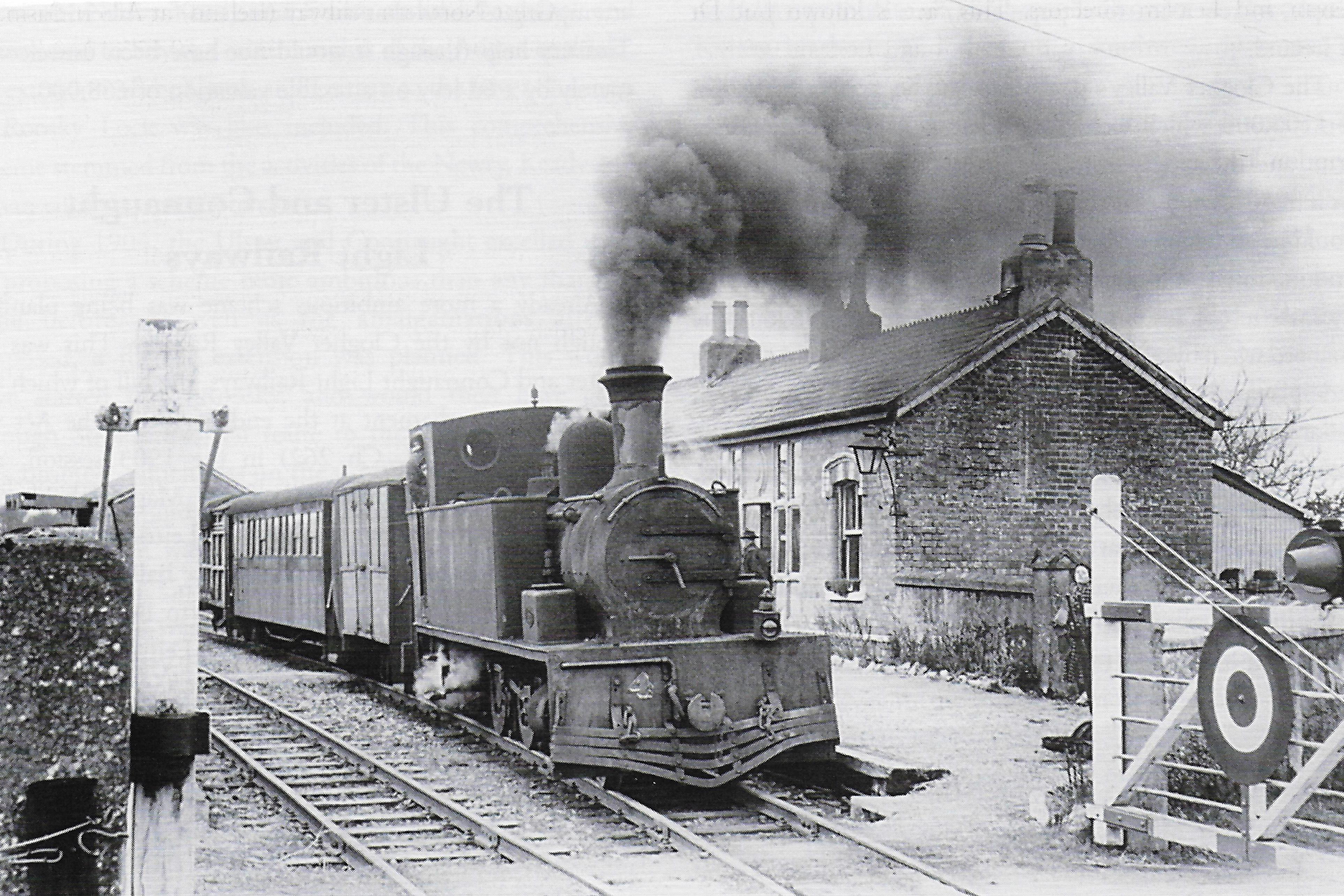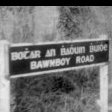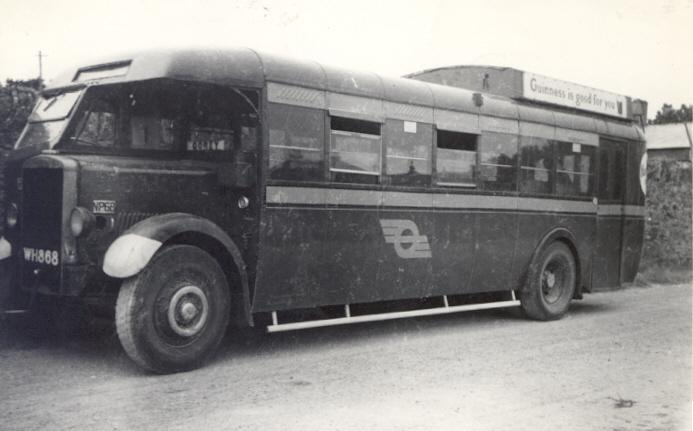-
Posts
68 -
Joined
-
Last visited
-
Days Won
1
Content Type
Profiles
Forums
Resource Library
Events
Gallery
Blogs
Store
Community Map
Posts posted by Phil3150
-
-
Mine apparently arrived today but has been intercepted as I am away from home. There may be trouble ahead.
-
 1
1
-
 1
1
-
-
Thanks for your replies.
This is an NP class bus which was the type used in the construction of the coach but that is all I have been able to find so far. It's clear that the bus bodies weren't altered much apart from the obvious saw cut!

Phil
-
A couple of long shots here: Does anyone know where there are any details of the cab interiors of the ex-CB&PR 2-4-2 tanks or the interior of the bus-coach 7L?
There are a number of photographs that show a tantalising glimpse of what goes on inside the cabs but I haven't found anything definitive. As far as the coach is concerned there is a partition between the van and coach sections and nine rows of 2 x 2 bus seats but what goes on inside the doors? There is supposedly a bench for the guard, but where? and a stove which seems to be in the middle of the doors on one side.
These are two signature items of rolling stock for my ongoing Bawnboy Road project and any help would be gratefully received.
Cheers
Phil
-
No luck I'm afraid. The catalogue is there but the leaflet has gone walkabout. Sorry.
-
 2
2
-
-
Definitely up for one!
Phil
-
I believe I may have one. I will check in the loft when the temperature there has dropped below melting point.
Phil
-
-
I have an unmade Jim Poots kit for a P class that I bought to operate the Cavan to Sligo service when I was planning to model Arigna station on the C&L. As I am now building Mohill, which was bus-less in the 1950's, I am sure a transfer to Dugort Harbour could be negotiated.
-
(PS couldn't resist. I'll PM you the details)
I'd be interested in that information too please
-
Colin, the N class were GSR buses built in 1939 and withdrawn from CIE service in the early 1950's. There is a picture of NP68 on the Classic Irish Buses website in the GSR section.
Phil
-
Ex-T & D stock brought into the C & L section was also thus treated. On both the West Clare and the C & L, former T & D coaches were thus turned out, minus any lining, but with a single eau-de-nil "snail" mid-side.
The former "bus-coach" on the C & L - a 1940s Inchicore invention of two bus bodies on an old C & L chassis was plain dark green, unlined, no snails. It was never repainted the lighter green.
Needless to say, all C & L locos were all-over grey, though towards the end, they could have been painted pink and tartan as far as anyone knew, as the REAL livery on them was a heavy coating of soot, brake dust, coal dust and general filth!
Thank you very much, that solves another problem for me, and by return too!!
-
jhb, back in the first post in this thread you included the following: " The C & L had ended up with one attractively painted coach in particular - a former T & D third was turned out in light green and looked very well." Presumably this was the later "standard" light green? Would it be fair to assume that the ex-T&D bogie van, 22L, that arrived at the same time would also have been painted in this shade? Also on page 38 of Anthony Burges' Smoke Amidst the Drumlins there is a photo of van no. 14 dated September 1957 which appears repainted in a lighter shade - another candidate?
Thank you if you, or anyone else, can help,
Phil
-
The large bilingual black enamel signs with white lettering were a GSR product. None of the earlier companies had anything bilingual. On some lines, including obscure narrow gauge places like Schull, Ballydehob, Moyasta or Mohill, these new signs appeared very quickly (though Ballinamore had its original navy enamel C & L sign until the end). On other GSR lines, the standard GSR enamel type never appeared; Abbeyfeale had its old wooden WLWR sign right until after closure, having survived ownership by the GSR and CIE.
Older wooden ones which did survive over the years, in GSR times and early CIE times were all painted black with letters and rims picked out in white.
Photos of Mohill in the fifties show a simple "MOHILL" board with a white frame attached to the front of the station building. Any idea of the timescale for the bilingual sign or was there another board elsewhere on the station?
Cheers
Phil
-
Hi all,
Does anyone out there have any dimensions of the surviving C&L buildings at Mohill, the station itself, the shelter and the goods store? I would be most grateful for any information.
Cheers
Phil
-
Interestingly photos of ex CBP 2-4-2T 10L and T&D 2-6-0T 6T look suspiciously like both locos were painted black following overhaul in the 1950s 6T ran with her number scrawled in white o the buffer beam rather than the usual shaded transfer.
Is there any consensus on whether 6T was black on delivery to the C&L? I'm hoping to run one relatively clean engine on my layout but I would like to get the colour right!
One further question and I'm sure the answer is on the forum somewhere but I can't find it - what available paint colours come closest to CIE engine grey?
Cheers
Phil
-
I think their website is well out of date at this stage, Seamus... their Irish kits are like gold dust now!
I'm after brass ones not the gold version!!
-
Does any member have one (or two) of these surplus to requirements please? I am after a couple - unbuilt, part-built or finished. I will be eternally grateful to anyone who can help!!
.png.c363cdf5c3fb7955cd92a55eb6dbbae0.png)




Bawnboy Road
in Irish Model Layouts
Posted
I have been lurking on this site for a while now so it’s probably time for me to come clean about my current project which is Bawboy Road station on the Cavan and Leitrim.
I have had a fascination with the Irish narrow gauge from a very early age. My father had a copy of Harold Fayle's "Narrow Gauge Railways of Ireland" and I spent many hours studying it. Two family holidays to Ireland in the mid-sixties as a teenager served to increase the interest as, although the lines were all closed by then, we did find many remains. By coincidence it was on one of those holidays that I also bought a copy of the April 1964 issue of the Railway Modeller containing the late David Lloyd's description of his Augher Valley Railway. That article made an enormous impression on me and I decided that I would have to build my own model of the Irish narrow gauge. There have been many distractions since then: university, work, marriage, family as well as 009, P4 with the Cambridge Area S4 Group and American h0, but I could never shake off the Irish narrow gauge bug. Finally redundancy and the ensuing early retirement provided the impetus to bite the bullet and build something. Even so it has not been that easy. I have discovered that retirement is not all it is cracked up to be as regards modelling time, especially when grandchildren and even great grandchildren intervene.
I had decided some years ago that my chosen line would be the Cavan and Leitrim and I made a start planning a model of Arigna. Then along came Andy Cundick with his layout which he had interpreted almost identically to my plans so I turned my attention to Mohill. I spent some time researching the station and its surroundings but slowly the realisation dawned that it was too big a project for me to tackle alone. The layout would have been over 20ft long and that meant a lot of modelling and problems with storage, transport and even in being able to set it up at home. (If anyone is considering tackling Mohill - please get in touch). I have finally settled on Bawnboy Road which has a much greater prospect of being completed in my lifetime.
So where am I at? I have drawn up a plan that will fit neatly into the corner of a room. I have never come to terms with Templot and although there were offers to help I have used it only to generate the point templates and have connected these with my favoured CAD package. The first baseboards have now been laser cut for me by my friend David Barham, “Fen End Pit” on another forum, and some track laying looms although I have a number of issues to sort before that begins. Over the years I have not been totally idle and I have built up a collection of rolling stock courtesy of the various kits that have been made available. I have also built a Backwoods 4-4-0T, although I’m not happy with its looks, and Alan Edgar, well known in these parts, volunteered (I think) to build one of the Branchlines Hunslet 2-6-0’s for me. 6T was my best Christmas present by a country mile!
Any layout based on the C&L mainline in 1957 has two “must feature” items – the ex-CB&PR 2-4-2 tanks and the Inchicore built “bus-coach”. The 2-4-2 was important in the layout design process as its ability to go round curves rather defines the layout’s geometry. Never-the-less taking the Worsley etches to my Scalefour area group and asking “How am I going to get this to go round corners?” was always going to be dangerous. The result was another friend, Brian Page, designing a new, fully sprung chassis with working radial trucks – and while we are at it let’s do a new body too! The chassis is undergoing ‘refinements’ but the superstructure is going along well, even taking into account my soldering skills. I am also looking at designing an etched ‘bus-coach’ with printed ends.
I will try to keep you updated, mainly to encourage me to keep the layout progressing.
Phil